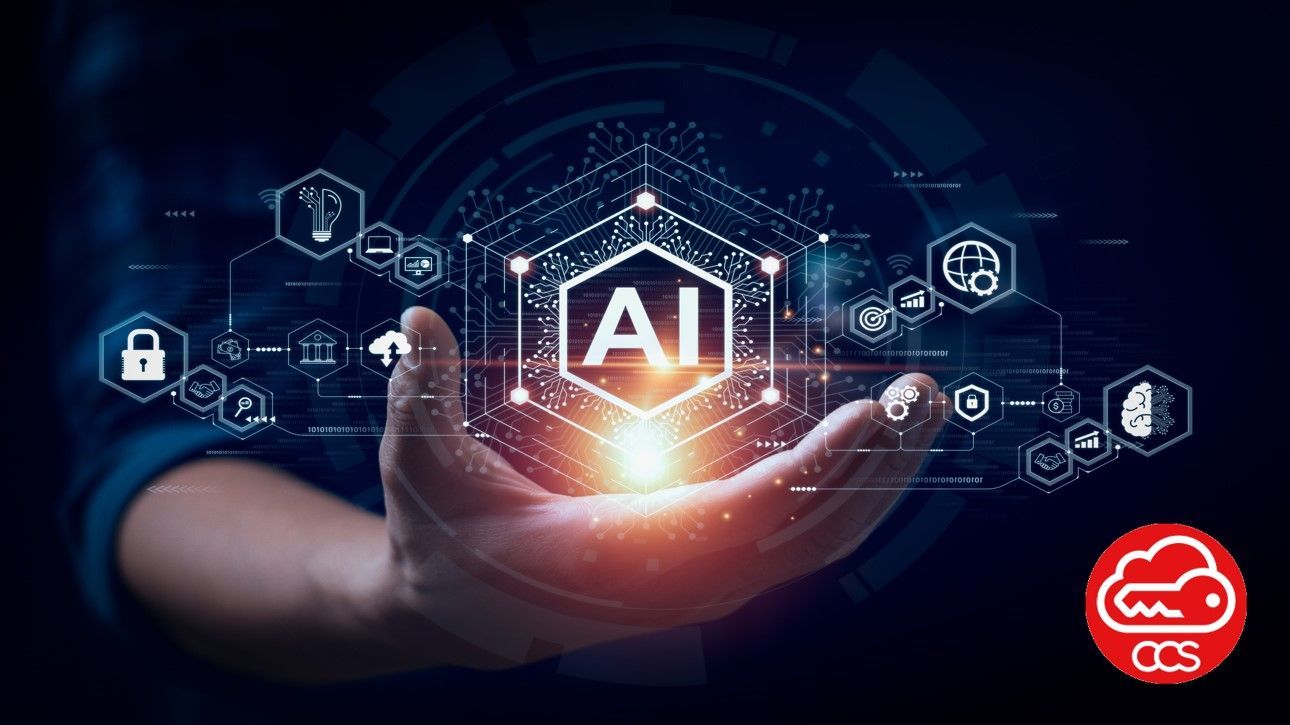AI's Growing Impact on Information Security:
Opportunities, Challenges, and Responsible Practices
AI has a significant impact on information, data, and cybersecurity in the future. As technology continues to evolve, AI's potential for enhancing security measures and addressing cyber threats becomes increasingly evident. From advanced threat detection to autonomous security systems, AI is expected to revolutionise the way organisations protect their sensitive data and infrastructure.
However, with new opportunities come new challenges, including adversarial attacks, privacy concerns, and the need for explainable AI. It is crucial to navigate these developments carefully and establish responsible practices to harness the benefits of AI while mitigating risks.
In the future, AI is likely to continue playing a significant role in information, data, and cybersecurity. Here are some potential developments and trends to consider:
Advanced Threat Detection:
- AI algorithms will continue to evolve to better detect and mitigate sophisticated cyber threats. Machine learning and deep learning techniques will be refined to identify patterns, anomalies, and indicators of compromise more effectively, enabling faster and more accurate threat detection.
Autonomous Security Systems:
- AI-powered security systems will become increasingly autonomous, with the ability to detect, analyse, and respond to security incidents in real-time. This includes automated incident response, adaptive defences, and proactive threat hunting capabilities, reducing human intervention and response time.
Enhanced User Authentication:
- AI can improve user authentication methods by analysing behavioural biometrics, such as typing patterns or mouse movements, to verify user identity more accurately. This can strengthen access control and reduce reliance on traditional passwords, which are often vulnerable to breaches.
Robust Adversarial Defence:
- As adversarial attacks continue to pose a threat, AI systems will develop more robust defences. Techniques like adversarial training, robust model architectures, and anomaly detection methods will be employed to mitigate the impact of adversarial manipulations on AI models.
Privacy-Preserving AI:
- With increasing concerns about data privacy, the development of privacy-preserving AI techniques will gain importance. Federated learning, secure multi-party computation, and differential privacy methods will allow for collaborative AI training without sharing sensitive data, ensuring privacy while still benefiting from AI capabilities.
Explainable AI for Security:
- The interpretability and explainable AI models will be critical in the security domain. Efforts will be made to develop AI models that can provide transparent explanations for their decisions, helping security analysts understand and trust the outputs of AI systems.
Regulatory Frameworks:
- Governments and organisations will establish regulations and standards specific to AI in cybersecurity to ensure responsible and secure deployment. These frameworks will address issues like privacy protection, bias mitigation, accountability, and transparency in AI systems used for security purposes.
In the future, AI is expected to transform the landscape of information, data, and cyber security. It will contribute to enhanced threat detection capabilities, autonomous security systems, improved user authentication methods, and robust defences against adversarial attacks. Privacy-preserving AI techniques and the pursuit of explainable AI for security purposes will also play important roles. However, these advancements come with the need for regulatory frameworks to ensure responsible and secure AI deployment.
By embracing these opportunities and addressing the challenges, organisations can leverage AI's potential to bolster information security in the ever-changing cyber landscape.
But could AI threaten Cyber Security?
AI can both enhance and threaten information security, depending on how it is developed, deployed, and used. Here are a some areas where it can threaten cyber security to consider:
Advanced Cyber Attacks:
- AI can also be utilised by cyber attackers to carry out sophisticated and targeted attacks. AI algorithms can automate and optimise attack strategies, making them more potent and evasive. For example, AI can be used to generate realistic phishing emails or to bypass traditional security measures, such as CAPTCHA.
Adversarial Attacks:
- Adversarial attacks are a concern when it comes to AI systems. Attackers can manipulate or deceive AI models by inputting specially crafted data designed to exploit vulnerabilities in the model's decision-making process. Adversarial attacks can lead to misclassification of data, compromising the integrity and reliability of AI-based security systems.
Privacy Concerns:
- AI relies heavily on data, and when it comes to information security, the privacy of sensitive data is of utmost importance. There are concerns about AI systems potentially collecting and processing personal data without adequate consent or safeguards. Improper handling of data can lead to privacy breaches, identity theft, or unauthorised access to confidential information.
AI Bias and Discrimination:
- AI models can inherit biases present in the data they are trained on, which can lead to discriminatory outcomes in security applications. For instance, facial recognition systems have shown biases against certain demographics, leading to potential discrimination. It is crucial to address these biases and ensure fair and unbiased decision-making in AI systems.
Mitigating Risks and Ensuring Responsible AI Usage:
To address these risks, organizations should prioritize security throughout the entire AI lifecycle, including rigorous testing, robust security measures, regular updates, and transparency in AI development and deployment. Additionally, regulations and standards for AI ethics and security can guide responsible and secure AI usage, ensuring the benefits of AI in information security are realized while minimizing potential threats.
The Role of ISO Standards in AI Security:
Two ISO Standards stand out in the world of AI, the ISO 27001 standard which focuses on information security management systems, providing a framework for organizations to manage their information security risks effectively. Also, ISO 42001, which is specifically designed for AI management systems, addressing the unique challenges and risks associated with AI technologies.
By adopting the principles of either
ISO 27001 and
ISO 42001, organizations can create a comprehensive and robust AI security framework that addresses both the technical and ethical aspects of AI systems. This approach ensures that AI systems are not only secure but also aligned with organizational values and ethical standards.
AI's growing impact on information security presents both opportunities and challenges. By embracing AI's potential to enhance threat detection, autonomous security systems, user authentication, and privacy-preserving techniques, organizations can bolster their information security measures. However, it is essential to address the risks associated with AI, such as advanced cyber attacks, adversarial attacks, privacy concerns, and AI bias, through responsible AI development, deployment, and usage.
The implementation of ISO 27001 and ISO 42001 standards provides a solid foundation for organizations to navigate the complex landscape of AI security and ensure that their AI systems are secure, ethical, and aligned with their organizational values.






